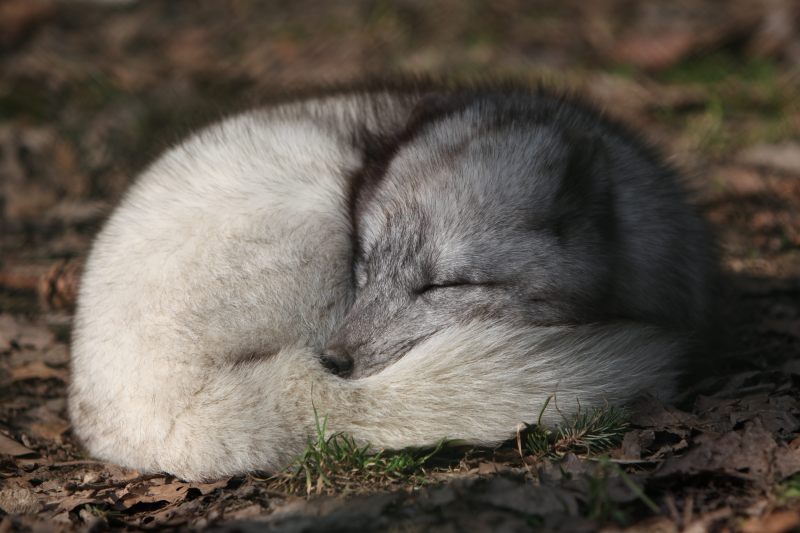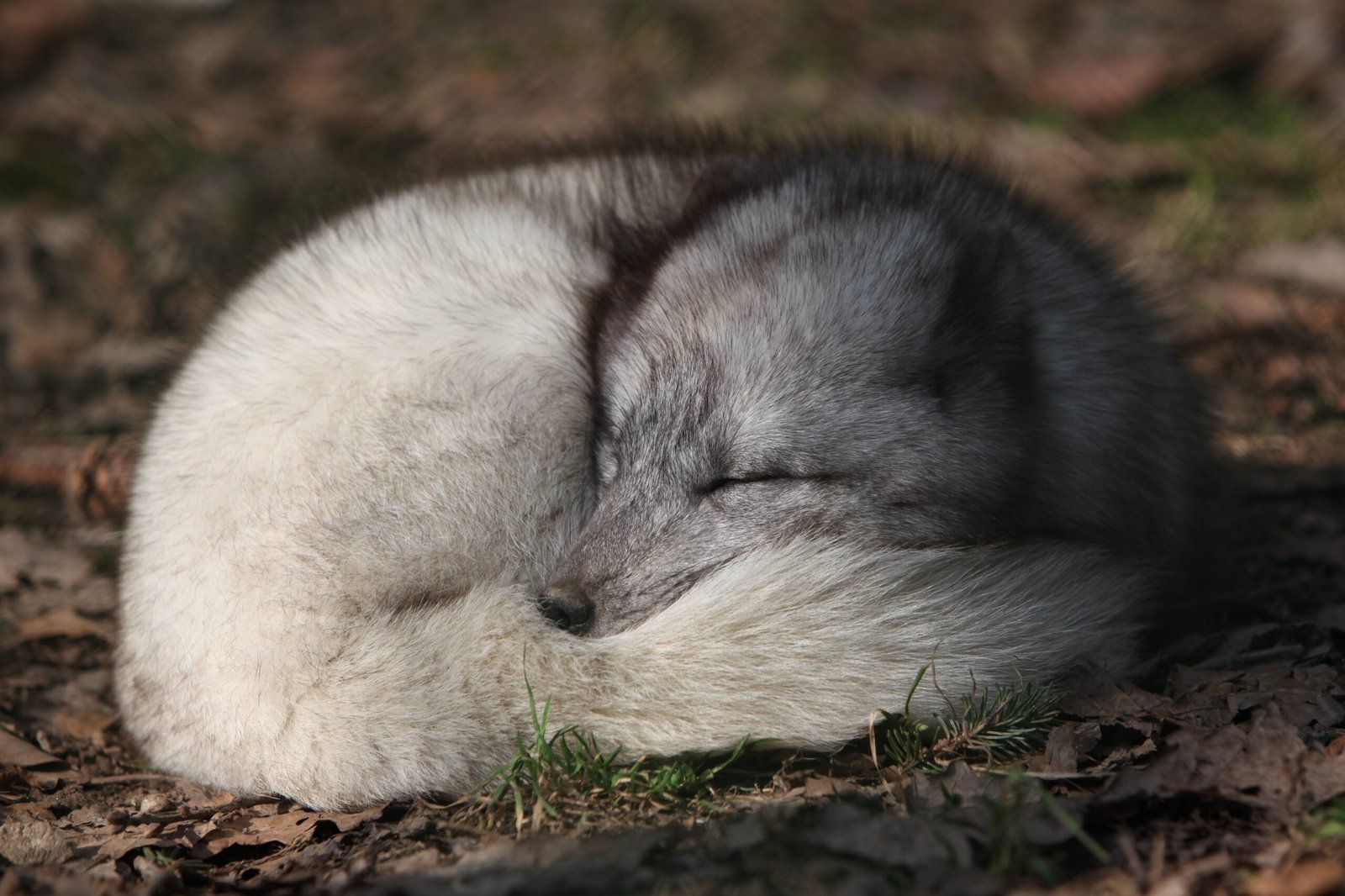
What has puzzled researchers and philosophers for many centuries is the ‘why’ of sleep, along with the ‘how’. We human animals know from experience that we need to sleep, and that the longer we go without it, the worse we feel. Chronic sleep-deprivation is known to be even fatal. Yet exactly why do we need sleep? To rest our bodies, and our brains? To sort through a day’s worth of memories? To cleanse our brain of waste products that collect as neurons and supporting cells busily do their thing?
Within the kingdom of Animalia one constant is that its brain-enabled species need to give these brains a regular break and have a good sleep. Although what ‘sleep’ entails here can differ significantly between species, generally it means a period of physical inactivity where the animal’s brain patterns change significantly with slower brainwaves. The occurrence of so-called rapid eye movement (REM) phases is also common, with dreaming quite possibly also being a feature among many animals, though obviously hard to ascertain.
Most recently strong evidence has arisen for sleep being essential to remove waste products, in the form of so-called glymphatic clearance. This is akin to lymphatic waste removal in other tissues, while our brains curiously enough lack a lymphatic system. So is sleeping just to a way to scrub our brains clean of waste?
Defining Sleep

For us mammals, sleep is literally something that we grow up with, with newborn mammals spending most of their time sleeping. Yet sleep is a universal phenomenon, not just among animals, but also among unicellular organisms who display pronounced circadian rhythms. This suggests that there is a definite physical cause for these regular periods of rest, further supported by the fact that in animals which posses a brain there is not a single species which does not require sleep.
This is a pattern which can be seen by small animals like insects, with Drosophila melanogaster (fruit flies) requiring about 2.5 hours of sleep each day, according to a number of studies. These studies also showed that D. melanogaster will suffer the effects of sleep deprivation if forced to stay awake. Afterwards they will sleep for significantly longer, and if kept from sleeping for extended periods of time, these little flies will die from lack of sleep. All of which is very similar to us big-brained humans, albeit that we require more like 7-9 hours of sleep each circadian cycle.
With sleep clearly being an essential part of survival, animals have developed a wide range of ways to be able to do so safely. From everyone’s favorite avian theropod dinosaurs grasping firmly onto a tree branch or similar while asleep, to wasps using their mandibles to do much the same and various animals opting to only sleep one half of their brains at a time with unihemispheric slow-wave sleep, something observed with avian, aquatic and terrestrial species.
Waking Up From Mysticism
Throughout history, sleep was most commonly seen as something mystical, related to dreams and visions, with purportedly gods and other mystical sources sending dreams as auguries. Equally it was regarded as something very similar to death, with poets like John Keats postulating the question “Can death be sleep, when life is but a dream”. This is a cultural phenomenon which is still easy to recognize in today’s plentiful dream interpretation books, along with euphemistic phrases for death that make it seem akin to a very long sleep.
Since we began to be able to examine the sleeping brain in more detail, it’s become much easier to regard the brain as an organic computer with the observable activity from ‘brain waves’ providing a clear indication of what it is currently doing. This is also where we discovered the importance of slow-wave sleep (SWS), characterized by relatively slow delta waves. It’s the third stage in non-rapid eye movement (NREM) sleep, characterized by the least amount of activity in the brain. It is also associated with healing and restoration of the brain’s tissues and energy supplies.
Interestingly, although we have evidence of NREM being an essential part of the brain’s functioning, in particular memory consolidation, its role in memory retention has been put into question. It was originally thought that REM sleep was essential for consolidating memories into long-term storage, but studies have shown this assumption to be incorrect. More interestingly, staying awake while not sleep-deprived does not appear to negatively impact this learning process, with e.g. a 2004 review article in Cell by Robert P. Vertes suggesting that sleep may not be important at all for memory consolidation.
Theoretically this should mean that we animals would have no reason to carve out hours each Sun cycle for a long nap each day, barring the physical needs of the brain tissues that so gently slosh about in our craniums.
Mind’s Gutter
While our body’s cells are busy doing their thing, their metabolic wastes keep piling up and have to be removed. In vertebrates, this is handled by the lymphatic system. This is an extensive network of branching vessels, lymph nodes, lymphatic tissues, etc. which in many respects mirrors the body’s circulatory system and is in fact an extension of it. Through the lymphatic system a significant part of blood plasma is returned to circulation after it and its nutrients have reached tissues via capillary action, allowing for efficient drainage of metabolic wastes at the same time.

Although the brain does not possess a lymphatic system of its own, in 2012 a ‘glymphatic system’ was proposed for the brain, recognizing the importance of the glial cells to achieve a similar function as the lymphatic system. This system would enhance the function of the cerebrospinal fluid (CSF) that envelops the central nervous system (CNS), as simple diffusion won’t suffice. Subsequent studies have revealed more details of how this system works, with a very recent January 2025 study in Cell by Natalie L. Hauglund et al. uncovering the role of norepinephrine (noradrenaline) release during NREM sleep.
Released by the locus coeruleus in the brainstem, noradrenaline causes arteries to contract, which is a process that tends to fluctuate fairly randomly throughout the day as the animal is active. During NREM sleep, however, the release of noradrenaline in the mice-under-test was seen to oscillate in a very deterministic manner. This results predictably in the countless arteries that in the brain alternatingly contracting and relaxing, creating a pulsing motion that serves to pump CSF. Along with this motion metabolic waste products and anything else that’s not supposed to be there is effectively flushed from the brain into the surrounding CSF from where the waste products can be filtered out.
Perhaps one of the most fascinating findings here are the effects of sleeping aids, like the tested zolpidem. Crucial in this study was that the mice were allowed to fall asleep naturally rather than being put under artificially. This allowed for a direct comparison between natural and zolpidem-induced sleep. Somewhat disturbingly, the zolpidem mice showed half the level of noradrenaline waves and more than a 30% reduction in fluid transport. This strongly suggests that the use of such sleeping aids may hamper the brain’s glymphatic system, with potentially harmful consequences over time.
Other implications here are the potential effects of glymphatic system disorders, whether aging-related or not. As already suggested in the earlier referenced 2012 study by Jeffrey J Iliff et al., conditions such as Alzheimer’s and similar may be induced or worsened by a failing glymphatic system, as evidenced by the collecting of protein plaques amidst dying neurons.
Although this most recent study involved mice and not humans, there are very good reasons to assume that the same principle of noradrenaline-induced pulsations is something that persists within the brains of many if not most animals. Even a tiny fruit fly may have to take a break for this exact reason, sleeping for a few hours. Possibly dreaming fruitfully as its brain readies itself for another busy day.
Featured image: “Sleeping arctic fox (Vulpes lagopus)” by Rama
This articles is written by : Nermeen Nabil Khear Abdelmalak
All rights reserved to : USAGOLDMIES . www.usagoldmines.com
You can Enjoy surfing our website categories and read more content in many fields you may like .
Why USAGoldMines ?
USAGoldMines is a comprehensive website offering the latest in financial, crypto, and technical news. With specialized sections for each category, it provides readers with up-to-date market insights, investment trends, and technological advancements, making it a valuable resource for investors and enthusiasts in the fast-paced financial world.
